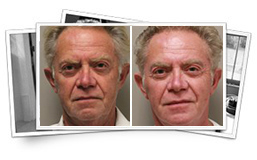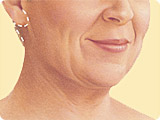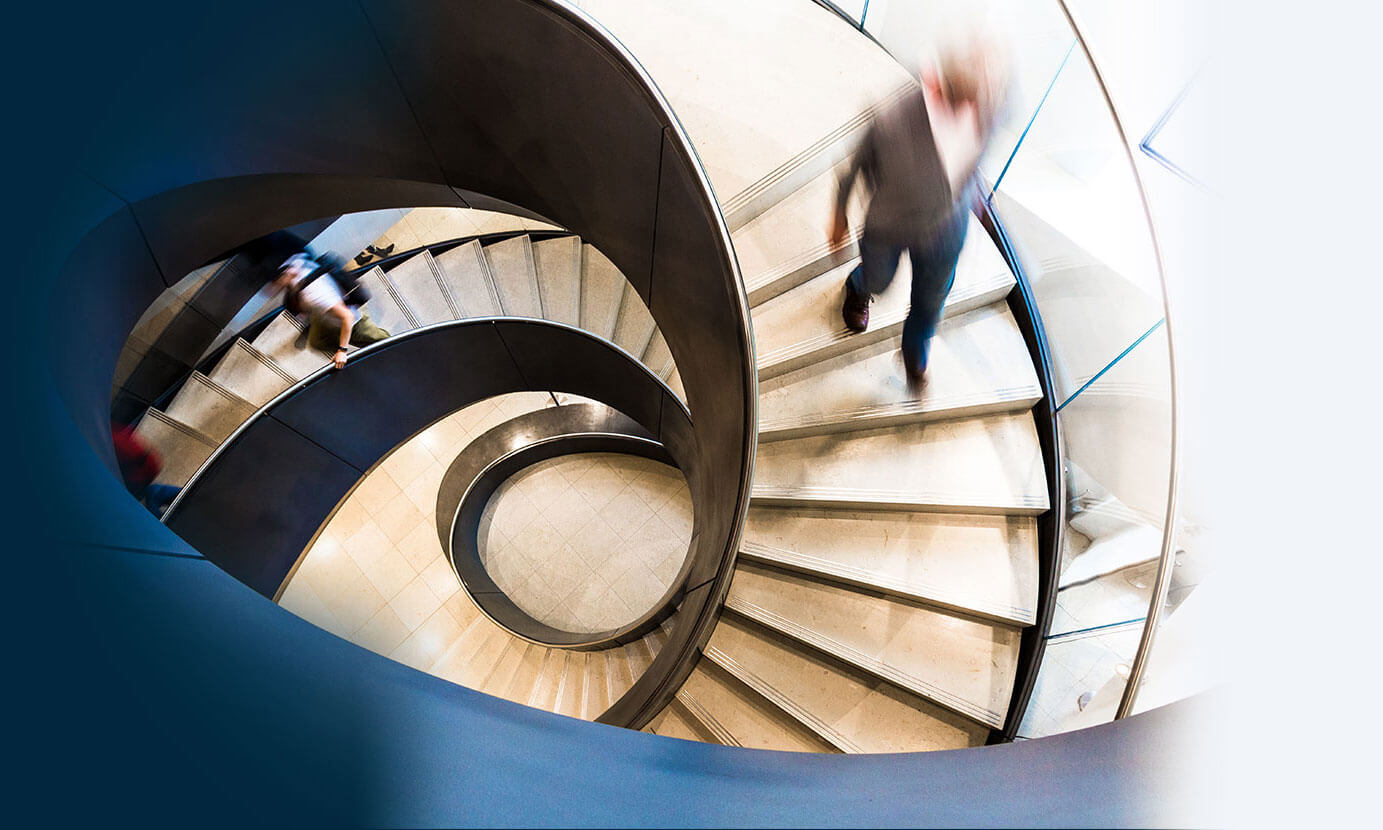Facelift / Necklift Thousand Oaks
A facelift, or rhytidectomy, is a surgical procedure for rejuvenation of the aging face. With a facelift in Thousand Oaks, our experienced board-certified plastic surgeons can address either the middle of the face (mid-facelift), the neck and jowls (neck lift), or both.
The traditional facelift involves making incisions either in front of the ear, behind the ear, or a combination of the two. There are several less-invasive techniques (but also less effective) that involve fewer scars (short-scar facelift), or almost no visible scars at all (suspension facelifts).
Regardless of the technique, a facelift is meant to elevate tissues that have sagged or stretched out as a result of aging and sun exposure, and to remove any excess skin in the process. The surgeons at the Kryger Institute offer a variety of facelift techniques.
Before & After Photos
 Facelift / Necklift
Facelift / Necklift
At the Kryger Institute of Plastic Surgery, we have experience in a vast array of surgical and non-surgical procedures. Click below to see some before and after photos of face and neck lifts.
MORE FACELIFT / NECTLIFT PHOTOS
 The incisions in front of the ear are hidden in the hair and in the natural skin creases.
The incisions in front of the ear are hidden in the hair and in the natural skin creases. The incision goes around the earlobe and behind the ear in a skin crease.
The incision goes around the earlobe and behind the ear in a skin crease.Who is a good candidate?
Women and men whose face and neck are sagging but who still have good skin elasticity are the best candidates for this facial plastic surgery procedure.
Most facelift patients are in their 40s, 50s, or 60s. However, some patients in their 70s who are in excellent health may also be good candidates. Patients with jowls and loose neck skin are excellent candidates for a neck lift as well.
Smokers must quit for 6 weeks before and 6 weeks after the surgery. If they do not quit smoking, there are significantly increased risks associated with the surgery.
If you have had a previous facelift or neck lift, you can still be an excellent candidate for a secondary facelift procedure. The surgeons at the Kryger Institute understand the complex issues involved in secondary facelift surgery and will counsel you regarding the best procedure for you.
Preparing for surgery
Tell your surgeon about any medical problems you have, and any problems you may have had with surgery in the past. A history of bleeding problems, nausea with surgery and high blood pressure are all important to disclose to your surgeon because these are risk factors for post-surgical bleeding.
Inform him about which medications you take-both prescription and non-prescription (including herbs and dietary supplements). You will be told which medications to stop and which to take before surgery. Blood-thinning medication, aspirin and anti-inflammatory medications such as ibuprofen and Aleve must be stopped for 7 days before surgery.
Finally, you must strictly follow the instructions about when to start fasting before surgery (usually at midnight). If you get sick or have any health issues in the days before surgery, please notify the office at once in case we have to postpone your operation.
The surgery and the incisions
The operation itself takes 2-4 hours depending on what type of facelift or neck lift you undergo. Most procedures are performed in the operating room, however, some less invasive facelift and neck lift techniques can be done in the office. The morning of surgery, your surgeon will answer any last-minute questions you may have. He will mark the incisions on your face. In most cases, the incision can be hidden in the natural skin creases and within the hair of the scalp.
The anesthesia
A facelift or neck lift can be performed under “twilight” anesthesia or general anesthesia. Twilight anesthesia consists of intravenous sedation and pain medication that keeps you relaxed and sleepy during the surgery. In addition, the surgeon uses local anesthesia to numb the face and neck. General anesthesia involves going completely to sleep with a breathing tube in your throat.
There is a slightly higher risk of nausea and vomiting after general anesthesia. However, both techniques are extremely safe. Your surgeon will discuss the anesthetic options with you before surgery.
Can other procedures be performed at the same surgery?
Yes. The surgeons at the Kryger Institute routinely perform other procedures in conjunction with facelifts and neck lifts. These include liposuction, fat injections, and other fillers, chemical peels, eyelid surgery, and browlift (forehead lift). The main limiting factor in performing multiple procedures at one operation is the increased length of surgery and the risks associated with this.
What kind of dressings and drains are there?
The dressings are removed the day after surgery. This is usually done in the office. Once the dressing comes off, there is no need for any further dressing.
It is normal for a small amount of fluid to leak from the incisions for the first few days, especially if you have had liposuction of the neck. This fluid looks like “Kool-Aid” or fruit-punch and is part of the normal healing process. If you have leaking fluid that persists more than 48 hours after surgery, call the office.
If there is tape or adhesive strips directly on your incision, do not remove these. If they fall off in the shower, there is no need for concern. Antibiotic ointment should be applied twice a day to all the incisions once the dressing comes off.
Rarely, your surgeon will use small drains that stay in for only 1-2 days. These help drain the fluid that is produced under your skin as part of the healing process. Without drains, this fluid can accumulate, called a seroma. The drains are easy to take care of and do not hurt to take out.
Can you go home the day of surgery?
A facelift or neck lift can be done safely as an outpatient, and most patients will be able to go home the same day. In some cases, your surgeon may recommend that you spend a night in the hospital after surgery. Also, some patients may prefer to spend a night in the hospital if they have young children at home or live alone and do not have any help at home.
How much pain is there after surgery?
Pain from a facelift or neck lift is highly variable during recovery and ranges from minimal to mild. It is worst in the first 24 hours, but then it rapidly improves. It is impossible to predict a person’s pain level. If you have done well with surgery in the past, you will likely be fine after this surgery. Many patients have adequate pain control with Tylenol.
Our surgeons have a lot of experience treating pain and have published scientific articles and written book chapters about anesthetics and pain control. They will do everything possible to minimize your pain, including using pain pumps after surgery and utilizing all the newest pain medication.
What about swelling and bruising?
Swelling and bruising are normal signs of the healing process. They occur after any surgery to varying degrees. Swelling peaks at about 48 hours, and then rapidly decreases. By the end of the first few weeks, most of the swelling is gone. By 6-8 weeks, all of the swelling has diminished.
Bruising is worst the day after surgery and then rapidly gets better. It is usually gone by two weeks. For the less invasive facelift procedures offered at the Kryger Institute, swelling and bruising can be so minimal that some patients look “normal” within a few days.
What restrictions are there?
You can shower the day after surgery, but you should not take a bath, use a hot tub, or go swimming for at least two weeks. The majority of patients feel good enough to return to most activities after a few days. Strenuous activities such as jogging, aerobics, weight-training, sit-ups, and sex should be avoided until 2 weeks after surgery.
When can I travel?
Traveling after surgery (air travel, long-distance car trips, train rides, etc) should not be done before you have had your first postoperative visit. Typically, this occurs 5-7 days after surgery for suture removal. Patients who are at high risk for developing a blood clot should not travel until instructed by their surgeon. Short car trips under 60 minutes can be done before the first visit.
A good rule of thumb is when you are off the stronger pain medication and can get up without assistance, you are ready to go for a short drive. You should not drive the car yourself, however, until your surgeon gives you clearance for this.
When can I go back to work?
This, of course, depends on the kind of work you do. Most people go back to work after a week. Sedentary jobs, such as computer work or talking on the phone can begin even sooner. If you have a strenuous job that involves a lot of lifting or physical activity, you may have to wait two weeks until you are ready for work. Please review the restrictions for further guidelines about getting back to work.
What kind of scars can I expect?
The scars from a facelift and neck lift usually heal very well and are hidden in the natural skin creases and the hairline. Some facelift techniques can be done without any plainly visible scars. Scarring, however, is an unpredictable part of any surgery. It is impossible to cut through the full thickness of the skin and not have a scar. Our surgeons have published numerous scientific papers about the scarring process and wound healing, and will do everything possible to minimize scarring.
To a large extent, however, scarring is determined by your genetics. If you are prone to hypertrophic (wide, raised) scars or keloids, make sure to inform your surgeon ahead of time. Our surgeons will use all the available techniques to minimize your scars based on their extensive research experience on hypertrophic scarring.
Your scars will be firm and pink for at least six weeks. After six weeks, scars are very strong and can withstand any activity. Then they may remain the same size for several months, or even appear to widen. After several months, your scars will begin to fade, although they will never disappear completely. It takes 1-2 years for a scar to completely heal.
Make sure to apply sunscreen containing zinc-oxide to your scars for six months so that they do not darken due to increased pigmentation.
What if I have a problem? When should I call the office?
The Kryger Institute welcomes calls from patients. If you have any concerns at any time, please feel free to call our office. If it is an emergency, the answering service is available 24 hours a day, including weekends and holidays. There is always a plastic surgeon on call. Your surgeon will discuss all the risks and potential complications with you before the facelift/neck lift surgery. You will receive detailed instructions about situations that warrant a call to the office.
How much does a facelift cost?
When determining the cost of a facelift, several factors must be considered. Price is determined based on the total surgical time, the techniques utilized, and many other details of each patient’s unique case.
Schedule your consultation
The best way to find out more about the benefits of a facelift in Thousand Oaks is with a consultation. Contact our office today set up your appointment.

